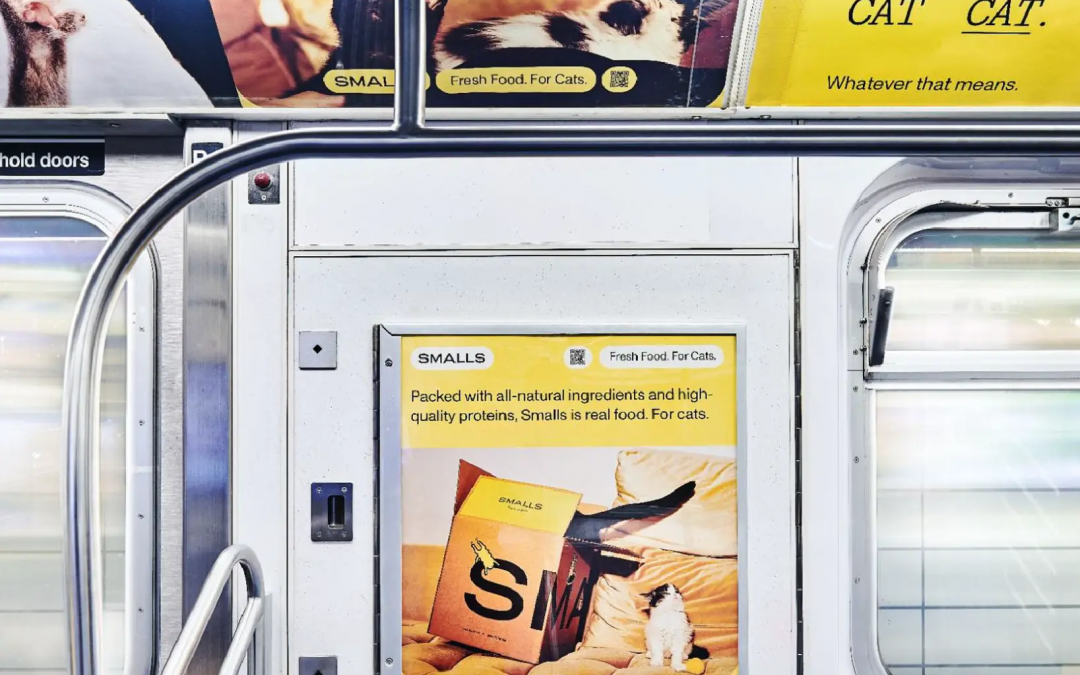
by Scott Howard | Feb 12, 2024 | Marketing and Advertising Insights, ScLoHo's Media, ScLoHo's Web World, The Not-So-Secret Writings of ScLoHo
Sometimes technology comes before it’s needed and then there is a triggering event that propels that emerging technology towards mainstream use.
This is the story of QR codes.
Do you use them in your business?
They’ve been around for quite awhile and some of the early uses left people wondering “Why?”
The triggering event that propelled them into the mainstream consumer world happened in 2020 and 2021.
You recall a mere 4 years ago when this coronavirus with the name Covid-19 created a huge upheaval in our world.
Initially at the end of 2019 and beginning of 2020 we were told it’s no big deal, just a few isolated cases in the world and if it came to America, we could isolate it. But a few weeks later a different strategy was urged. First we were told to stay home and shelter in place for a few weeks. Different government agencies and groups were giving conflicting advice and the whole thing turned political instead of just a health issue.
It was up to states and local governments to create and enforce rules, while solutions were being fast-tracked that led to millions getting vaccine jabs and others saying it was a hoax, or at least not as big of a deal as the media was portraying it to be.
A lot of confusion and upheaval but also a few changes in the way businesses operated.
One shift was the move back to one-time use items instead of reusable. For years, climate change advocates were moving us away from plastics and even some paper to old fashioned alternatives. In my life, the local Taco Bell that I would stop at for my breakfast burrito used to give me my food on a tray. When the pandemic hit they were drive-thru only but when they reopened the dining room, it was no more trays, here’s your food in a paper bag.
I’ve seen other restaurants switch from glassware and silverware to disposable in order to eliminate potential cross contamination.
And we’ve finally seen the rise of QR code use.
Useful QR Code use, not the silly QR code use from a decade ago.
Many restaurants and drinking establishments switched from having printed menus that would get touched by 100’s of people and were big germ spreaders to placing QR codes on the table so we can scan and view the menu on our phones. Some establishments also have a set up where i can pay my bill with QR code technology.
Let me be clear that in case you are unaware of what these QR codes do, they are simply a way for a consumer to get to a place online by scanning a QR code. This makes it possible for you and I to visit a website without typing in a URL or doing a Google Search or any of that.
A QR code is a tool that the camera on your smartphone or tablet can read and interpret as a hyperlink to something online. That’s all it is.
From a business standpoint QR codes can be a money saver too because instead of printing hundreds of menu’s and then tossing them when they have changes or simply are worn out, the business can update the online page. Someplaces update it weekly to reflect their specials. This was prohibitively expense when all we had was ink and paper.
QR codes can by a shortcut to trackable hyperlinks too which helps businesses but doesn’t look scary to the consumer.
In 2012, I wrote an article about Idiotic QR Codes that I’ve linked here. The Air Force Reserve was running a traditional billboard campaign that you would see as you’re driving and expected people to have their phones handy to be able to scan a giant QR code while speeding down the road. Talk about the dangers of multi-tasking distracted driving!
I’ve written other articles about QR codes in years past that you can find here.
A big challenge in advertising and marketing is the ability to track results. and while the use of QR codes is not a solution for everyone, everywhere, I discovered a marketing success story from URL shortening service Bit.ly that was used by cat food company Smalls in New York City.
Smalls recently launched an advertising campaign throughout the New York City subway system that scratched just the right itch for cat parents in the Big Apple. These adorable ads had the power to make even the most dogged commuter pause and purr with delight. according to the article.
Signage on the subway system included QR codes.
Knowing that this campaign marked their grand entrance into the world of big-city advertising, Smalls wanted to get the most out of their efforts by leveraging QR Codes to drive viewers to their website across every ad placement.
And what were the results?
By putting the spotlight on these irresistibly photogenic cats and pairing them with concise, compelling messaging, Smalls managed to not only create brand awareness but also guide people toward their ultimate goal—interacting with the brand on their website. With smartphones in hand, subway riders could easily scan the Bitly QR Code and enter the Smalls universe.
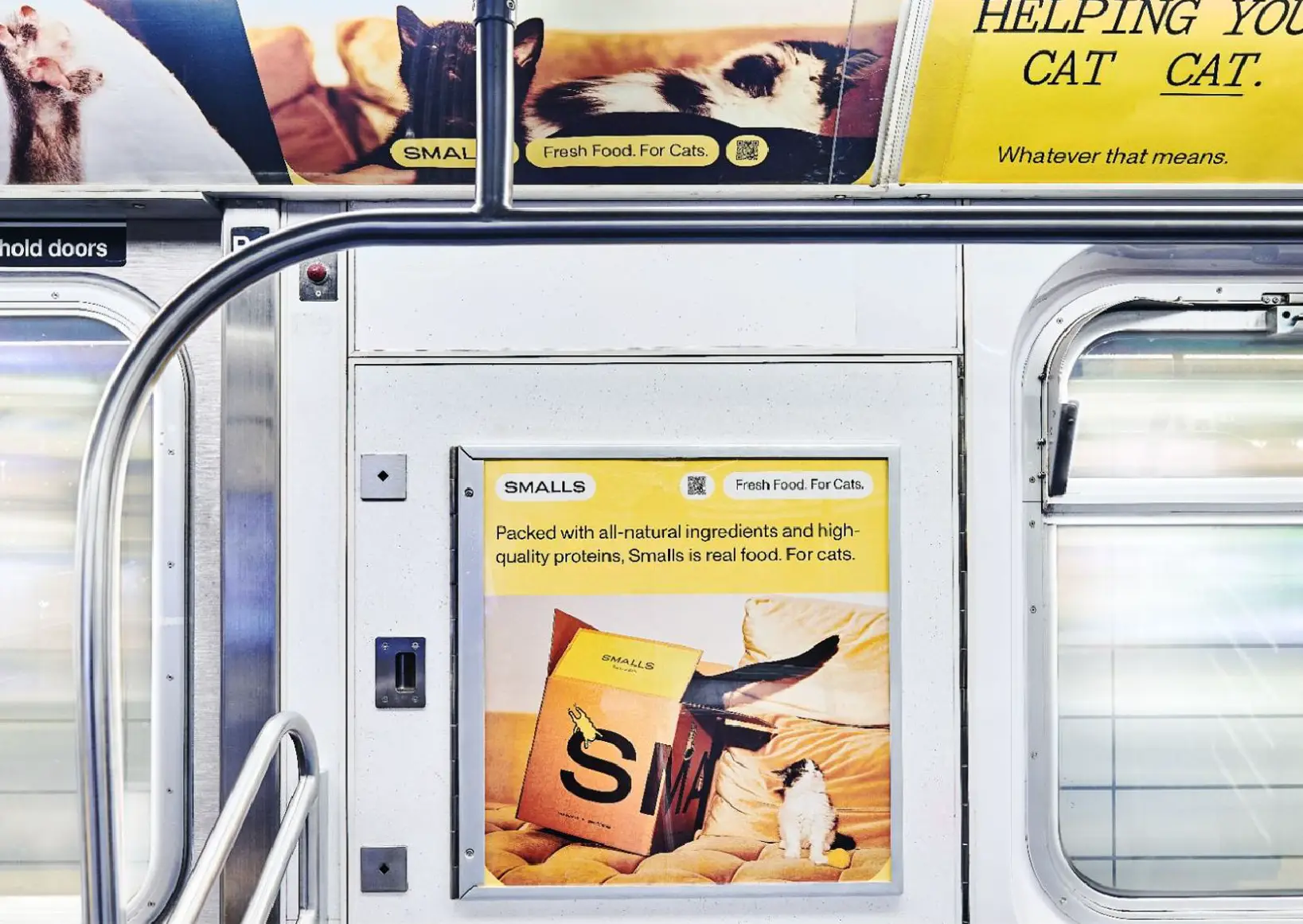
As a result, Smalls reached up to 3.6 million subway riders and 500,000 New York City cat parents, building more brand awareness and driving new traffic to their website.
I’ve used the free Bit.ly services for years along with Google’s URL shortening service. Both offer free and paid versions of QR Code generation. A couple years ago when I was looking to add people to my team, I created cards that I handed out at career fairs with a QR code that potential candidates could scan to go online and see our openings. We’ve also used them at a fund-raising event to make it easy to receive online donations.
Need help deciding if you should include QR codes in your business? Reach out and let’s talk. I’d also like to hear from those of you who are already implementing QR codes and how you’ve incorporated them.
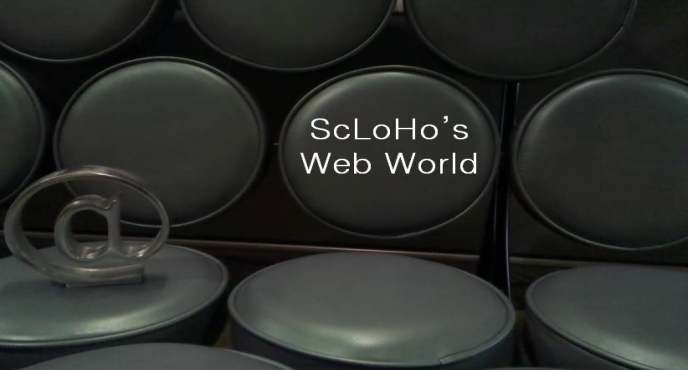
by Scott Howard | Feb 8, 2012 | ScLoHo's Web World
Would you believe magazines?
Last month I wrote about one of the worst places to slap a QR code was a billboard.
I also showed you a QR code that I encountered at the grocery store and explained how to effectively use QR codes at this early stage.
But one of the downfalls of QR Codes is they have to be scan-able
I’ve worked in the print business a few times and as both an insider and a consumer I know that certain publications have poor quality control. Your daily newspaper or some direct mail coupons have sections that are so blurry, no one can read them, let alone a QR code scanner.
Check out this story from Mediapost:
Magazine pages became increasingly popular places for marketers to slap QR codes last year. A survey of the top 100 U.S. magazines by circulation found the number of “mobile action codes” climbed from 352 in the first- quarter issues to 1,899 in the fourth quarter, for a record total of 4,468 in 2011.
The study by mobile marketing firm Nellymoser underscores that advertisers drove the growth of QR codes in magazine. It notes that in January 2011 there were seven advertising codes for each editorial one, and by September, that ratio had jumped to 25:1. The number of magazine titles with at least one action code hit 90% in May for the first time, and rose to 96% in July.
Nellymoser points to the percentage of magazine pages that include QR codes as a better gauge for tracking adoption because the statistic isn’t as likely to be affected by seasonality or skipped issues. The proportion of pages with codes rose steadily from 3.55% in March to 8.36% in December.
The average number of codes per issue roughly tripled in 2011, rising from 2.3 in the first quarter to 6.5 by year’s end. Nearly all of the codes printed in the top 100 magazines in the fourth quarter were either QR codes (72%) or Microsoft Tags (25%).
So how were the codes put to use? The study found that advertisers and editors are no longer creating codes that send readers to a desktop site. Instead, the goal is to engage users with branding campaigns and product demos, m-commerce initiatives, social media and sweepstakes for building customer databases.
More than half (54%) of action codes featured video for showcasing products, offering behind-the-scenes footage or how-to guides. Nearly a third (30%) of codes were used for list-building, 23% enabled sharing a video or product information via social properties, like Facebook and Twitter, and 19% linked to an e-commerce store.
When it came to ad categories, the study showed nearly 40% of the action codes used in magazine advertising came from companies in three industries: beauty, home and fashion. Companies in these segments also led the way in codes placed in retail stores. In the fourth quarter, electronics vendors, such as Bose and Intel, joined the list of top 10 brands in terms of code usage.
The top 10 magazines by circulation accounted for 28% of all codes (1,255), and most of those were titles targeting women, like InStyle and Lucky.
Looking at placement, 90% of codes appeared at the bottom of the page, the traditional place for ads with calls to action. By the fourth quarter, seven out of 10 action codes were accompanied by information that described what happens after the scan. “This is considered by many to be a best practice and follows the pattern of many other calls to action,” according to Nellymoser.
At the same time, the firm noted a shift away from embellishments, with few codes sporting an adjacent icon. It noted that in the second quarter, for example, nearly half of all codes included an instruction for how to download a code reader. That figure had dropped to 23% by the end of 2011. And hardly any codes were accompanied by an SMS campaign for people who did not have action code readers.
.

by Scott Howard | Jan 19, 2012 | ScLoHo's Web World
Last year I was traveling from Fort Wayne to Indianapolis and somewhere along Interstate 69 there was a billboard with a QR code on it. Sort of hard to scan when you’re not expecting it and zipping along at 70 miles an hour.
I have no idea who the billboard was advertising.
But recently I noticed this sign:
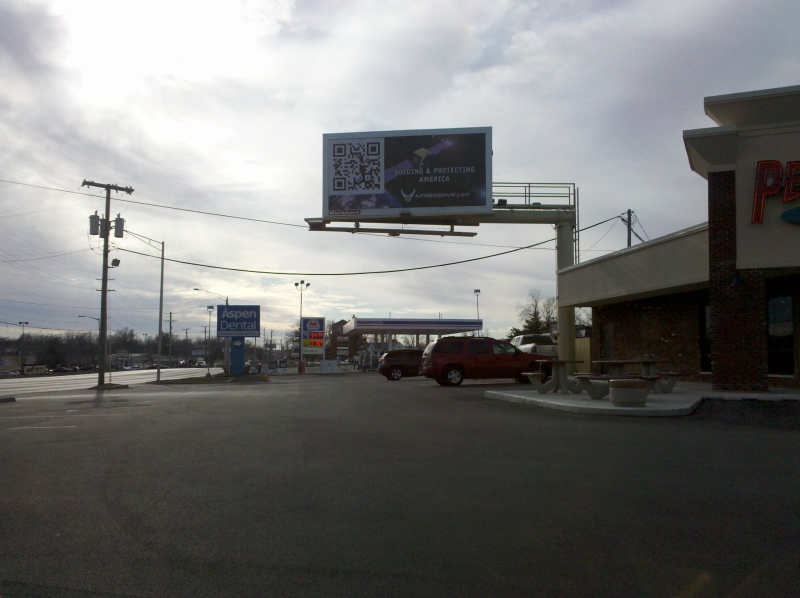
This was in Fort Wayne, Indiana on Clinton Ave, looking south from Coliseum Blvd.
I decided to pull over and check this out:
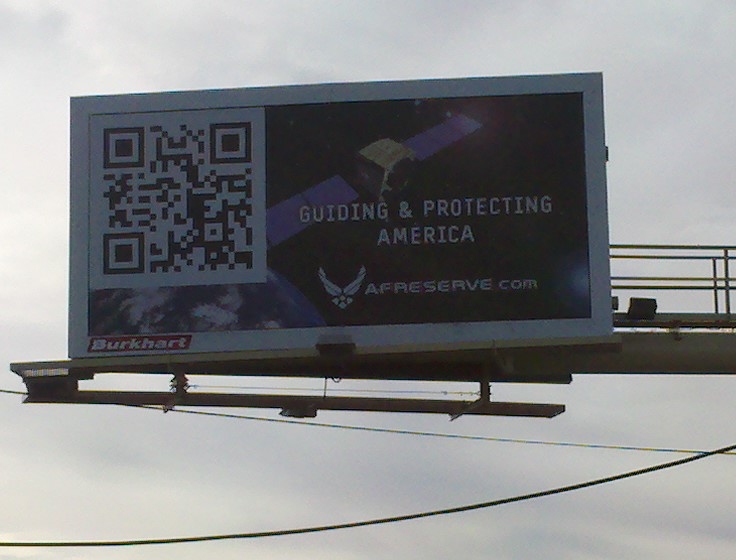
This is beyond Idiotic QR Coding.
There are so many things wrong.
The sign does not tell you what to do with the strange black & white design.
(Not everyone is aware of QR codes.)
It is unclear who the sign is for.
In order for me to scan a QR code, it is going to take me a few seconds to pull up the scanner app on my phone, followed by a few seconds to focus my phone scanner on the giant QR code.
I’ve seen this billboard a few other places around town and they all are placed on the wrong side of the intersection.
The sign is across the street from me when I am waiting at a red light and is too far away.
When the QR code is scanable from your car, your car is moving.
Basically it is impossible for anyone to scan this QR code unless they stop their car in a parking lot and waste 5 minutes of their life to see what happens if they use the QR code reader app on their smartphone.
What really burns my britches is this billboard and all the others like it are being funded by my tax dollars.
Your tax dollars too.
The QR code on those signs take you to an Air Force Reserve Blog. The only positive thing I can say is that it is optimized for mobile.
But the blog is stupid, but that’s another topic for another day.
This is probably a national campaign, and the sales guy at the billboard company didn’t have any say in the “creative design” of the sign, they just took the order and our tax dollars and made a fool out of QR Codes.
Whoever is the brains behind this needs to be fired.

by Scott Howard | Jan 18, 2012 | ScLoHo's Web World
Last summer I created a name tag to wear at a social media event in Indianapolis.
It had my name, my Twitter handle, @ScLoHo, and a QR code that would take people to a special web page I created.
After a couple of hours a college student that I was talking to asked me if he could scan the QR code, which he did and he won a prize that I had with me to reward the first person to do so.
I was surprised that only one person out of about 75 even said anything considering this was a Social Media group and this was a QR code, the latest rage.
But there were a couple lessons I learned.
Despite my interest and understanding of QR codes, they were not “universal” yet.
And as I thought back to the basics of marketing, when introducing something new, you should tell people what to do with it.
If I had included words on my nametag that said: “Scan this QR Code for a Free Prize”, even those who had no idea what a QR code was, would be tempted to ask and then perhaps scan.
Saturday I made a run to the grocery store and near the milk was this display that caught my attention:
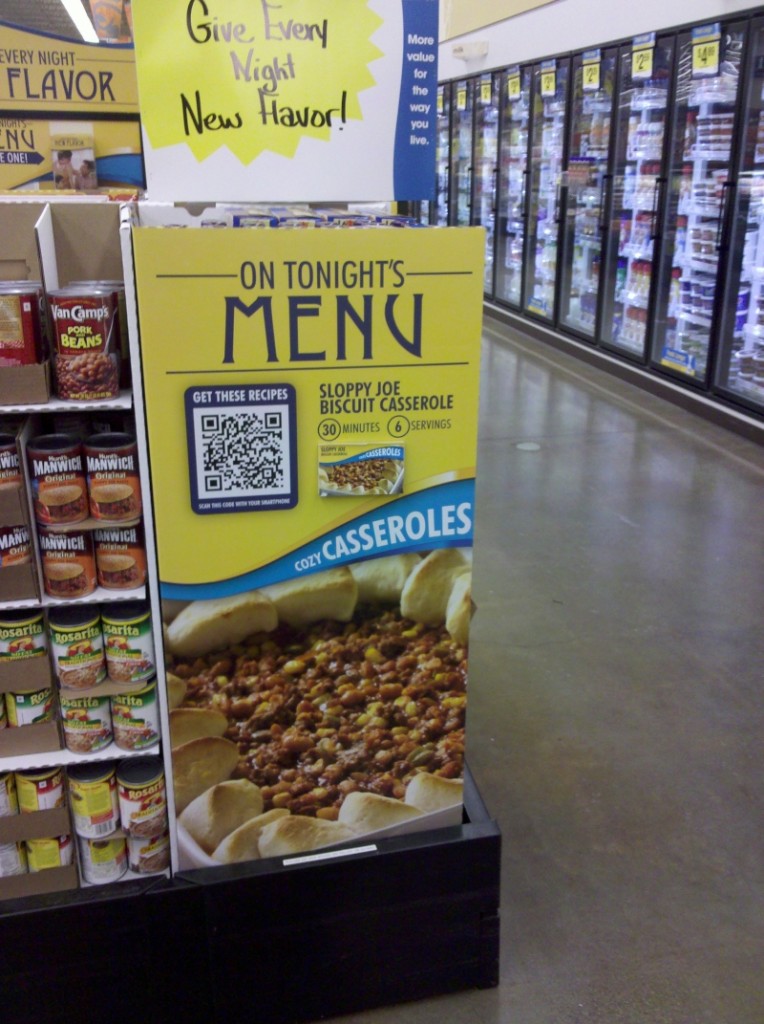
Of course I snapped a picture and then decided to scan the QR code:
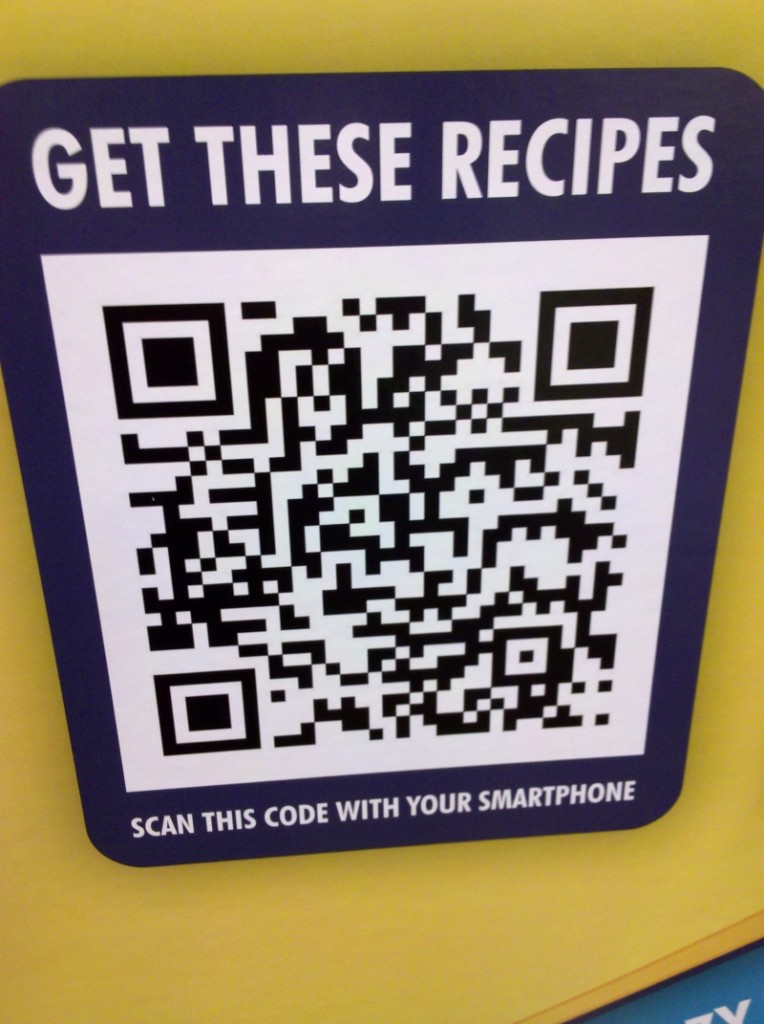
You can scan this code right now, unless you are reading this on your phone, and you will discover that they did everything right.
The QR code goes to a mobile friendly website with recipes for using the product that they want me to buy.
They also told me what to do with the QR code.
What I don’t know is if they will follow through and connect all the dots with the data they collect once I visit their website via my phone while in their store.
But as far as getting me and others to participate in the QR code promotion, they did everything right.
Tomorrow, an example of a QR code promotion that does everything wrong.

by Scott Howard | Jan 17, 2012 | ScLoHo's Web World
Love them, hate them, don’t care about them, it doesn’t matter.
QR Codes are going to be around for awhile.
Saturday my friend and co-worker at Cirrus ABS, Kevin Mullett tweeted a link to a story on Mashable that shared 10 Creative Ways to Use QR Codes.
One of my favorites from the list was this one:
This past holiday season, retailer JCPenney allowed customers to add a personal touch to their gifts. When you purchased a gift from any JCPenney store, you received a “Santa Tag” with an accompanying QR code. By scanning the code, the giver could record a personalized voice message for the recipient. The the giver stuck the code on the package like a gift card.

Here’s the complete list:
1. Reinventing the Shopping Experience
2. Enhancing the User Experience
3. Streamlining the Customer’s Visit
4. Noting the Things You Enjoy
5. Give Customers Something They Want
6. Providing Real-Time Information
7. Initiate Share-worthy Competitions
8. Personalized Gift Giving
9. Help Your Customers Grow Their Businesses
10. Share Modern Day Mixtapes
Read the whole story for examples of each of these.
Tomorrow I’ll dig in depth my experience with a QR code at a supermarket, and then Thursday, one of the worst examples of QR code placement.








